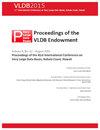采用:结构化日志异常检测管道
IF 3.3
3区 计算机科学
Q2 COMPUTER SCIENCE, INFORMATION SYSTEMS
引用次数: 0
摘要
异常检测在工业中得到了广泛的应用。实际情况是,应用程序可能有许多需要监视异常情况的场景。但是,异常检测的完整过程需要花费大量的时间,包括数据采集、数据处理、模型训练和模型部署。特别是,一些简单的场景不需要构建复杂的异常检测模型。这导致了资源的浪费。为了解决这些问题,我们构建了一个异常检测管道(ADOps)来模块化每个步骤。对于简单的异常检测场景,不需要编程,只需修改配置文件即可创建新的异常检测任务。此外,它还可以提高复杂异常检测模型的开发效率。我们展示了用户如何在异常检测管道上创建异常检测任务,以及工程师如何使用它来开发异常检测模型。本文章由计算机程序翻译,如有差异,请以英文原文为准。
ADOps: An Anomaly Detection Pipeline in Structured Logs
Anomaly detection has been extensively implemented in industry. The reality is that an application may have numerous scenarios where anomalies need to be monitored. However, the complete process of anomaly detection will take much time, including data acquisition, data processing, model training, and model deployment. In particular, some simple scenarios do not require building complex anomaly detection models. This results in a waste of resources. To solve these problems, we build an anomaly detection pipeline(ADOps) to modularize each step. For simple anomaly detection scenarios, no programming is required and new anomaly detection tasks can be created by simply modifying the configuration file. In addition, it can also improve the development efficiency of complex anomaly detection models. We show how users create anomaly detection tasks on the anomaly detection pipeline and how engineers use it to develop anomaly detection models.
求助全文
通过发布文献求助,成功后即可免费获取论文全文。
去求助
来源期刊

Proceedings of the Vldb Endowment
Computer Science-General Computer Science
CiteScore
7.70
自引率
0.00%
发文量
95
期刊介绍:
The Proceedings of the VLDB (PVLDB) welcomes original research papers on a broad range of research topics related to all aspects of data management, where systems issues play a significant role, such as data management system technology and information management infrastructures, including their very large scale of experimentation, novel architectures, and demanding applications as well as their underpinning theory. The scope of a submission for PVLDB is also described by the subject areas given below. Moreover, the scope of PVLDB is restricted to scientific areas that are covered by the combined expertise on the submission’s topic of the journal’s editorial board. Finally, the submission’s contributions should build on work already published in data management outlets, e.g., PVLDB, VLDBJ, ACM SIGMOD, IEEE ICDE, EDBT, ACM TODS, IEEE TKDE, and go beyond a syntactic citation.
 求助内容:
求助内容: 应助结果提醒方式:
应助结果提醒方式:


